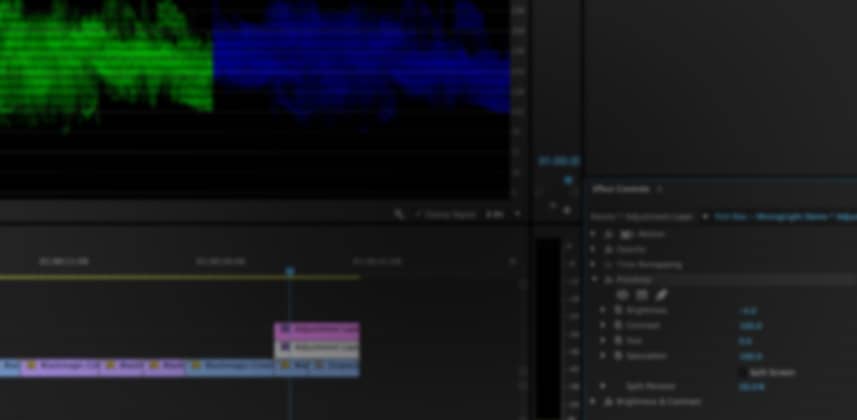Day 15: 25 Insights in 25 Days Holiday Marathon
Exploring the Legacy Color Correction Filters
Color Correcting in Premiere Pro CC 2015 took a huge leap forward with the introduction of the ‘Lumetri Panel’ and the dedicated Color workspace.
But before the Lumetri Panel, Premiere Pro had a reputation of being tough when color correcting. Here in the Insights Library, Robbie helped make it a bit easier by introducing you to Premiere’s Tonal Range Definition option in the 3-Way Color Corrector. He showed how the default settings set you up for a really hard time color correcting in Premiere Pro and how to customize them for better results.
Beyond the 3-Way Color Corrector, there are a ton of filters for maximizing the quality of our images. Or are there?
Earlier this year I was tasked with teaching Premiere Pro users how to color correct efficiently using its core filter set
So I sat down for many hours and explored each and every color filter. It’s the type of thing I enjoy doing, since it teaches me about the thought processes used by the engineers as it applies to color correcting in Premiere Pro.
I’m sad to say, the results were beyond disappointing; the results were frustrating and maddening! I kept asking myself over and over…
How did anyone color correct in Premiere prior to the CC 2015 release?!?
Suddenly it became clear why the SpeedGrade acquisition was so necessary and why Adobe immediately tied SpeedGrade to Premiere using the DirectLink technology.
But SpeedGrade development has stalled while the color expertise of SpeedGrade, via the Lumetri architecture, has seen constant improvement within Premiere Pro. This seems to point to the future direction of where Adobe wants editors to color correct: Inside the Lumetri color panel.
We’ll be talking about the Lumetri panel extensively, but not today
This Insight kicks off a 2-part exploration of the ‘legacy’ color correction filters in Premiere Pro. I won’t be covering all of the filters. Just a few representative color filters that demonstrate the inherit problems with almost the entire set of filters. It’ll help explain why color correcting in Premiere Pro prior to the 2015 release has been such a maddening experience.
It’ll also set us up for understanding why the Lumetri panel is an elegant solution to a very deep problem.
Don’t be discouraged by what you see in this Insight
I wouldn’t have started this Desert Island Challenge for Premiere Pro if I didn’t have a solid workflow designed—as long as you’re working in Premiere Pro CC 2015 (or later). In later Insights, when you see the workflow I’ve designed, you’ll understand why I took us through this initial pain… it’ll clarify some of my workflow decisions—allowing you to not just follow my advice, blindly, but make educated modifications and build a workflow that suits you (but doesn’t also destroy your images).
So let’s get to it and see how color correcting in Premiere Pro with its legacy color filters will results in end-user confusion.
-pat
Member Content
Sorry... the rest of this content is for members only. You'll need to login or Join Now to continue (we hope you do!).
Need more information about our memberships? Click to learn more.
Membership optionsMember Login


